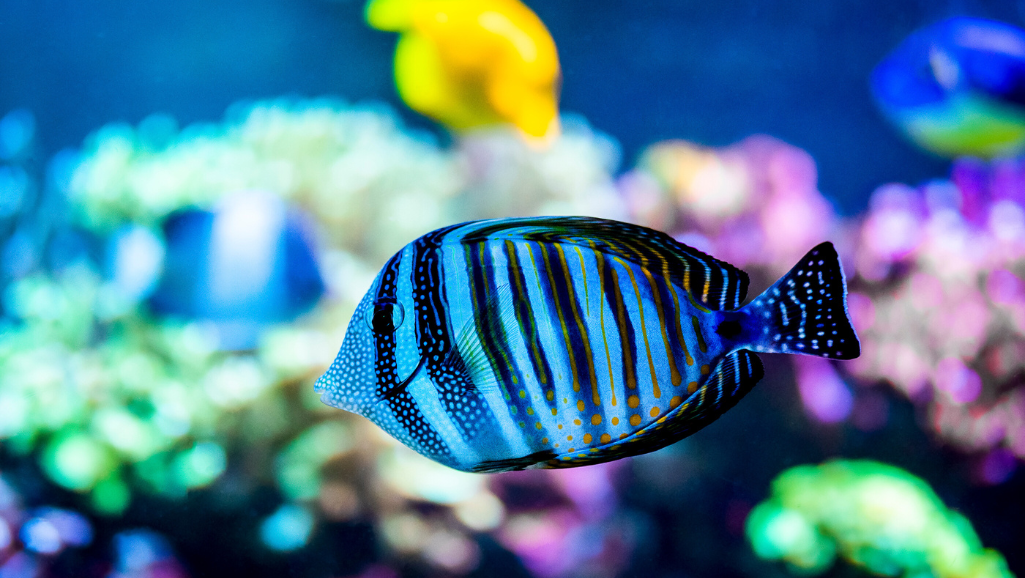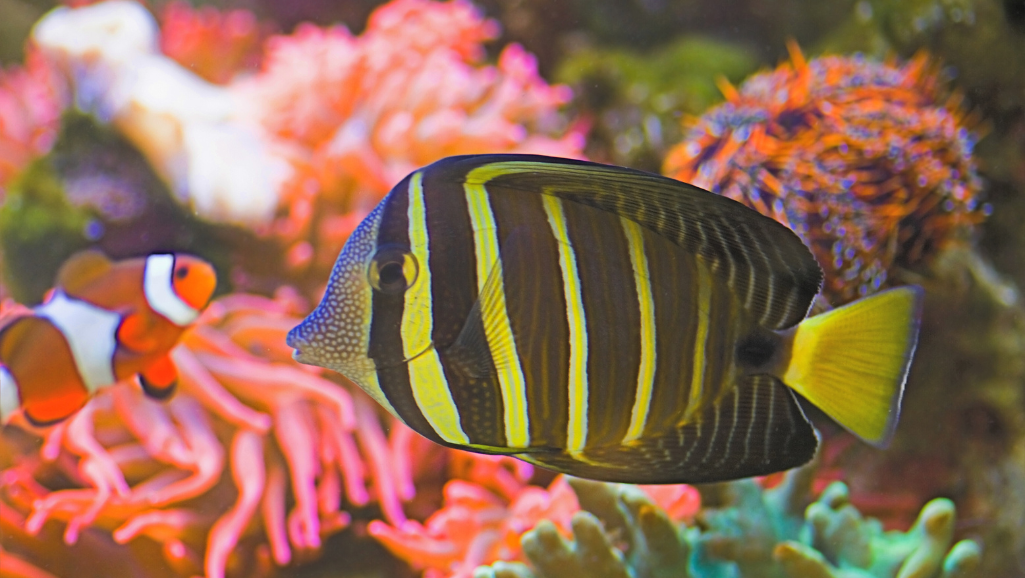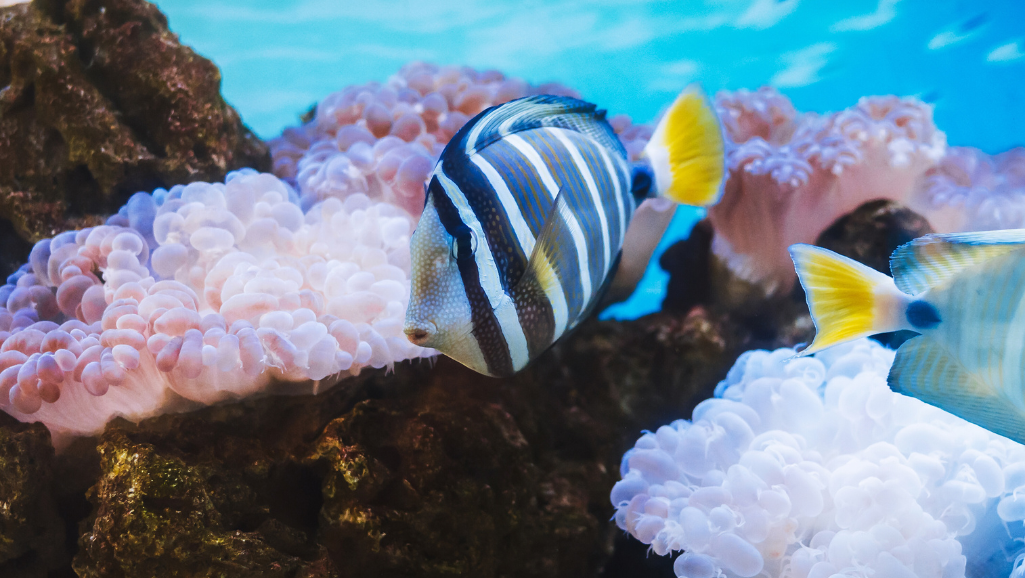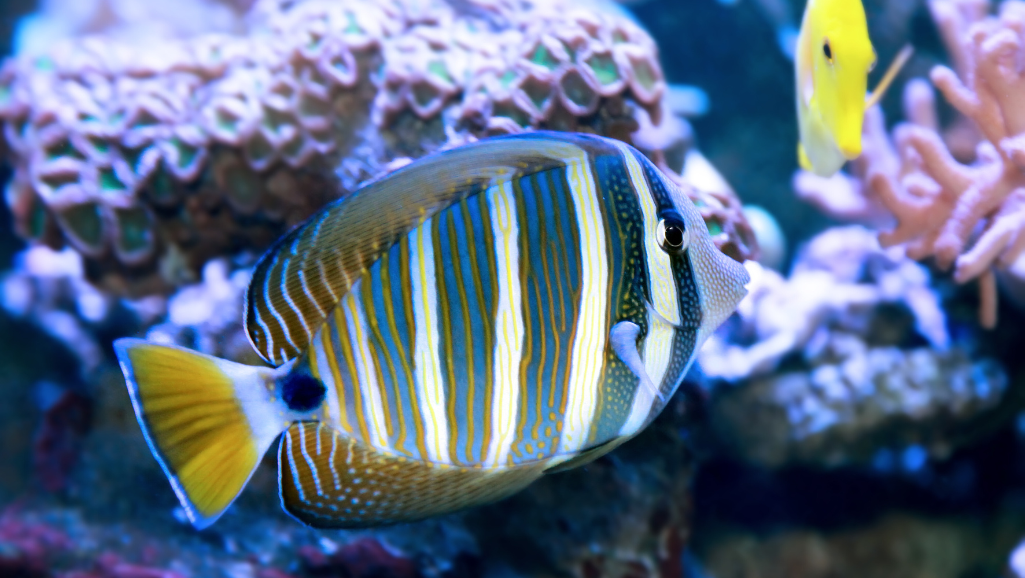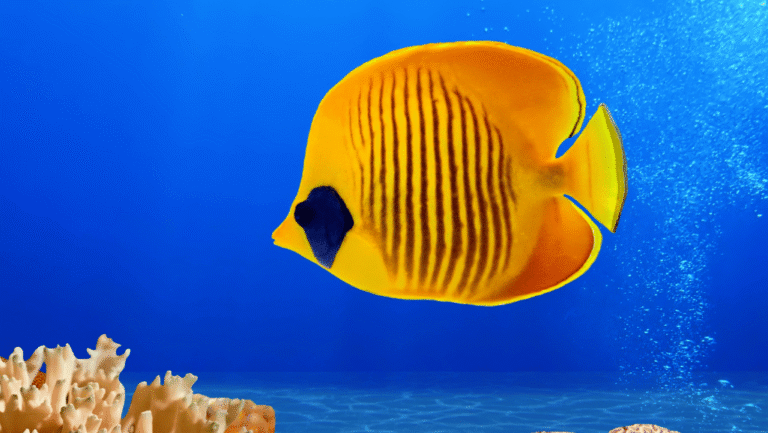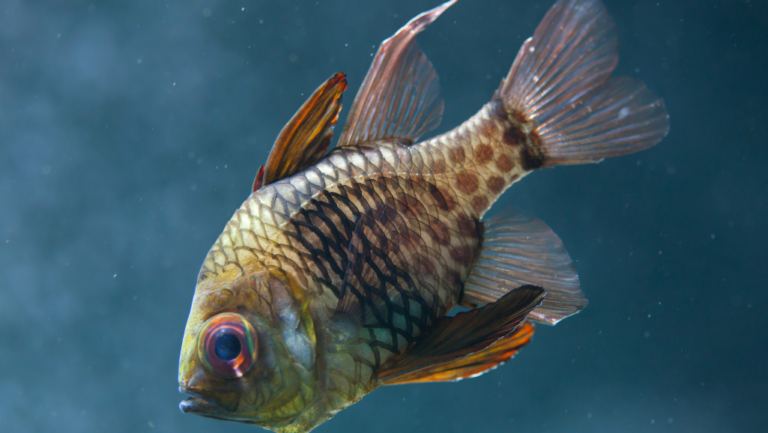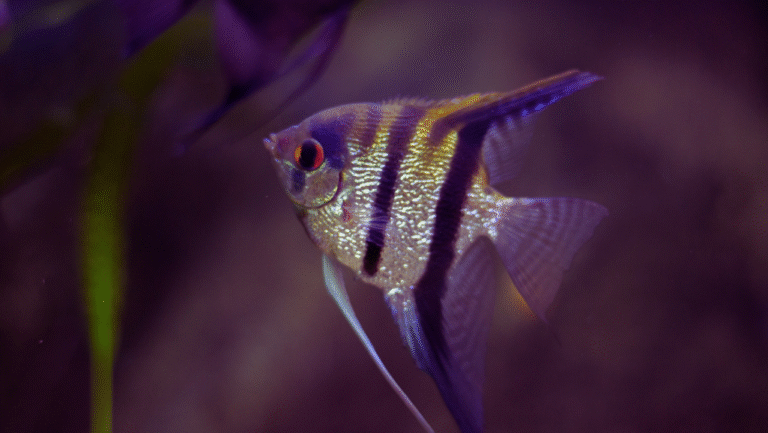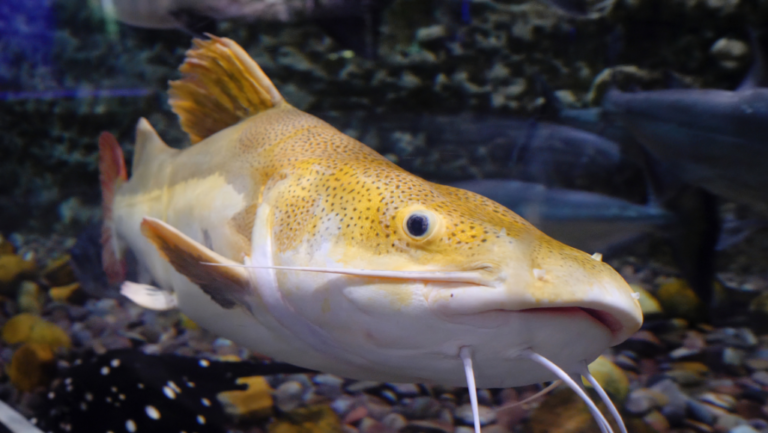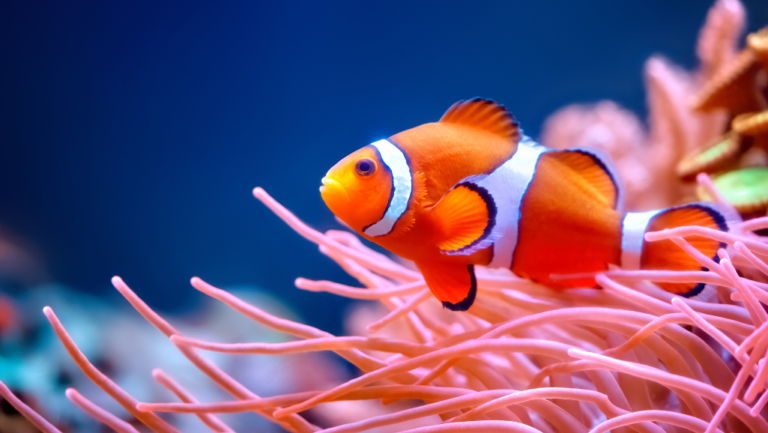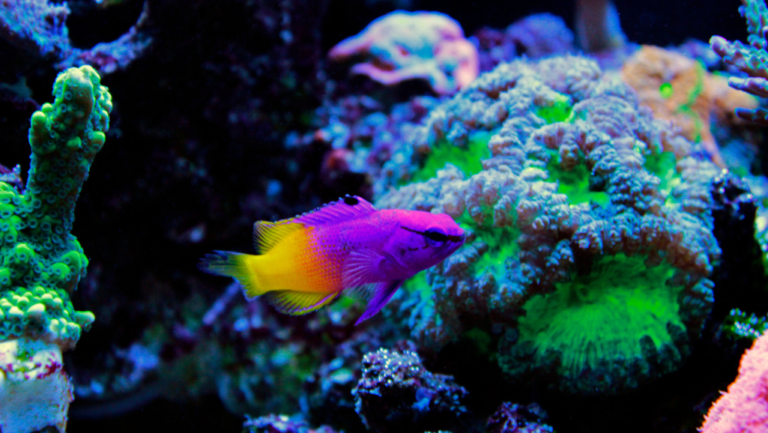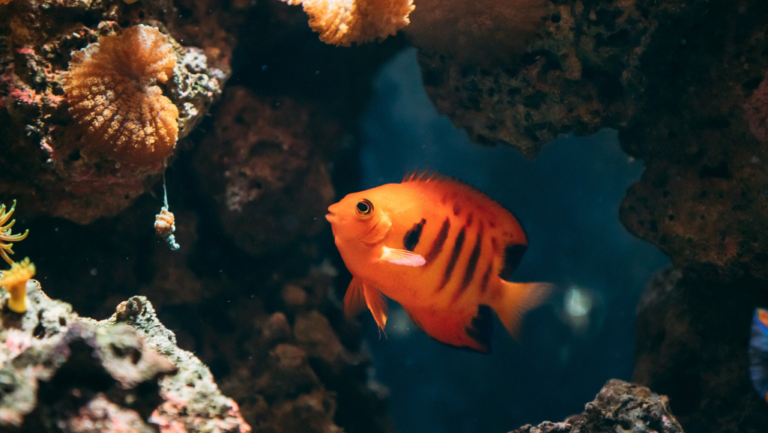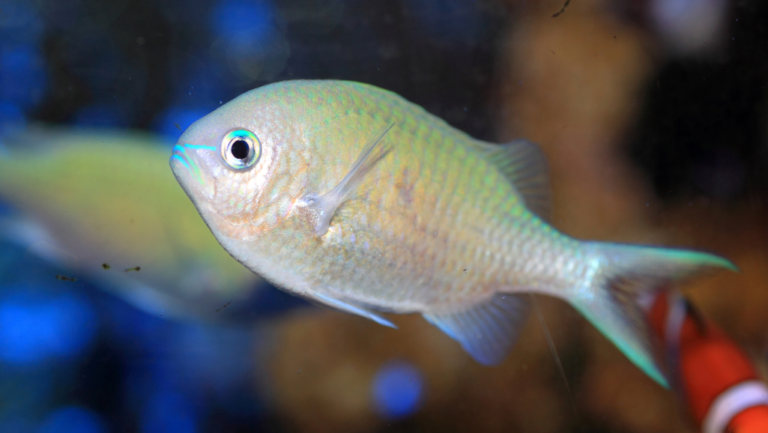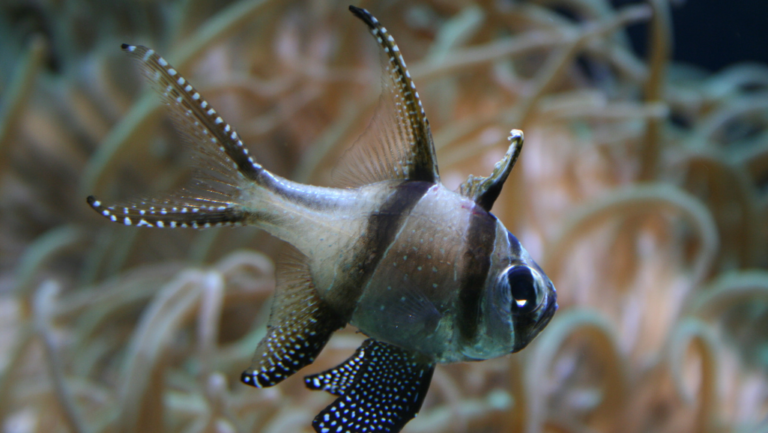The Sailfin Tang has won the hearts of many saltwater aquarium fans. Known as Zebrasoma veliferum, these fish are a sight to see. They live for about 5 to 7 years and come from the rich waters of Oceania, the Indian Ocean, and the South Pacific.
These herbivores love the seaward reefs. They are a big part of many saltwater aquariums. To keep them happy, you need a big tank and the right water conditions.
A 125-gallon tank is perfect for them. It lets them swim and show off their fins. They like water that’s well-aerated and has the right temperature and pH. For more info, check out The Spruce Pets.
Key Takeaways
- Ensure a minimum tank volume of 125 gallons to accommodate the Sailfin Tang’s territorial nature and need for space.
- Maintain water temperatures from 75 to 82 F and pH levels between 8.1 to 8.4 for the optimal health of the Sailfin Tang.
- Offer a predominantly herbivorous diet rich in microalgae and suitable tank foods to satisfy this fish’s nutritional needs.
- Consider the compatibility of tankmates carefully; neon gobies and cleaner shrimp can coexist peacefully with Sailfin Tangs.
- Understand that breeding Sailfin Tangs in captivity requires awareness of their polygamous rituals related to lunar cycles.
- Recreate a strong water current within the tank environment to reflect the Sailfin Tang’s preference for dynamic water conditions.
Introduction to the Sailfin Tang
The Sailfin Tang, known as Zebrasoma veliferum, is a stunning marine fish. It’s known for its unique look and role in ocean life. This fish belongs to the Acanthuridae family, famous for its bright colors and important role in reef ecosystems.
Overview of the Species
The Sailfin Tang is not just a pretty fish; it’s also vital to its home, coral reefs. It eats algae, keeping reefs healthy. Found in the Pacific and Western Indian Oceans, it shows it can thrive in many marine settings.
Scientific Classification
The Sailfin Tang is part of the Zebrasoma genus, one of the bigger species in it. It shows the wide variety of marine life, highlighting the ocean’s vast biodiversity. It’s in the order Perciformes and family Acanthuridae, related to other surgeonfish. They share traits like sharp spines for defense and territorial fights.
Physical Characteristics
Adult Sailfin Tangs have a striking color change from young to old. They start with bright yellow stripes on a medium brown body and turn brownish-olive with pale yellow as they grow. Their large dorsal and anal fins make them look bigger, reaching up to 40.0 cm / 15.7 in in size.
The Sailfin Tang’s unique features are key to keeping reef environments balanced. This highlights the need to protect such marine fish to preserve ocean biodiversity.
Ideal Tank Conditions for Sailfin Tang
Make a great home for your Sailfin Tang by knowing what a saltwater aquarium needs. These fish need certain water parameters and a tank that feels like their natural home. This helps them grow and behave well.
Recommended Tank Size
Experts say start with a tank size of at least 180 gallons for Sailfin Tangs. This size lets them swim and grow up to 15 inches long. Big tanks are better for fish and keep water parameters stable.
Water Quality Parameters
Keeping the right water parameters is key for your Sailfin Tang’s health. They need a temperature of 75°F to 82°F, pH 8.1 to 8.4, and salinity 1.023 to 1.025. Also, dKH should be 8 to 12.
Change about 15-20% of the water weekly to keep nitrates low. This makes the tank feel like their natural home. For more tips, check out this guide on maintaining optimal tank conditions for Sailfin.
Substrate and Decor Considerations
The tank’s substrate and decor are important for Sailfin Tangs. Use coral sand as the substrate to keep pH and alkalinity right. Add live rocks and corals for looks and algae, which they love to eat.
These decorations also give them places to hide and reduce stress. This helps them behave naturally and stay healthy. Make sure the water flow is moderate to high to mimic a natural reef.
Sailfin Tang Diet and Feeding Habits
Knowing what Sailfin Tangs eat is key to keeping them healthy and colorful in your tank. They love to eat algae, which is vital for their health.
Natural Diet in the Wild
Sailfin Tangs mainly eat marine microalgae in the wild. This helps them and keeps the ocean healthy. They eat algae to stop it from covering coral reefs, which helps other sea life too.
Recommended Diet for Captivity
To feed them right, give Sailfin Tangs dried seaweed and fresh or frozen algae. You can also add boiled carrots and leafy greens for extra vitamins and minerals. This makes them healthier and longer-lived.
- Dried seaweed sheets (preferably nori)
- Boiled carrots and leafy greens
- Small amounts of brine and mysid shrimp for protein
Feeding Schedule and Techniques
Feeding them regularly is important. Feed them small amounts three times a day. This helps them stay healthy and avoid problems like Lateral Line Erosion.
Using an acclimation box helps when introducing new foods or fish. It makes sure they accept the new food well. Watch how much they eat to keep the water clean and healthy.
Behavior and Social Structure
Knowing how Sailfin Tang behavior and their fish species social structure work is key for a peaceful saltwater aquarium compatibility. These fish can be semi-aggressive, mainly towards their own kind and other surgeonfish. It’s best to have only one Sailfin Tang in a tank to avoid fights.
Typical Temperament
Sailfin Tangs add excitement to an aquarium. They are mostly calm with other fish, but can be territorial with their own kind. A well-designed tank with hiding spots helps keep them peaceful with other fish.
Interactions with Other Fish
Choosing the right tank mates is vital for saltwater aquarium compatibility. Fish that are not surgeonfish and don’t compete for food usually get along with Sailfin Tangs. Adding species like neon gobies and cleaner shrimp is also good. They help keep the tank clean and healthy, showing a strong fish species social structure. For more tips on peaceful fish, check out the Celestial Pearl Danio care guide.
Territoriality and Space Needs
Sailfin Tangs need lots of room to be happy. A big tank with a natural reef setup is best. This gives them space to swim and hide, keeping them healthy and colorful.
In short, understanding Sailfin Tang behavior and needs is critical. With the right tank and tank mates, keeping a Sailfin Tang is rewarding. This approach creates a beautiful and stable marine environment.
Common Health Issues in Sailfin Tangs
Keeping Sailfin Tangs healthy is key for fish lovers. These beautiful sea creatures often face specific marine fish diseases. Knowing how to handle these issues is vital for their care.
Signs of Illness to Monitor
Look out for white spots on Sailfin Tangs, which can mean marine ich. Also, watch for odd swimming or a big drop in eating. Signs of stress or color loss are important health warnings.
Preventative Health Care Practices
Good aquarium health starts with clean water. A tank that’s been set up for at least six months helps. Keep an eye on water temperature, pH, and nitrate levels. Check out advanced aquarium cleaning tools and techniques to keep things perfect.
Treatment Options for Common Conditions
- Use copper-based meds under a vet’s advice for marine ich.
- Keep water quality high with regular changes to stop diseases.
- Talk to a marine vet for a custom plan for your Sailfin Tang’s health issues.
Note: Move sick fish to a separate tank fast to stop the disease from spreading.
Breeding Sailfin Tangs in Captivity
The journey of Sailfin Tang breeding in a saltwater aquarium is both tough and fulfilling. These stunning fish are a pinnacle of saltwater aquarium propagation success. Yet, they need specific conditions to breed successfully.
Challenges of Breeding
Breeding Sailfin Tangs comes with many obstacles. One big challenge is figuring out the gender without seeing them spawn. They also rely on lunar cycles for breeding. Male Sailfin Tangs mate with many females, making controlled breeding tricky.
Proper Conditions for Breeding
To encourage fish species reproduction, it’s key to mimic their natural habitat. This means replicating lunar cycles and having a tank big enough for their active nature. Tanks should be at least 180 gallons. Water should be between 24°C to 28°C (75°F to 82°F) to match their tropical home.
Care for Fry and Juvenile Fish
After spawning, caring for the fry is vital. Sailfin Tang eggs hatch into larvae that feed on yolk sacs before eating plankton. During the acronurus larva stage, they are without scales and need top-notch water quality to grow well.
Successfully breeding Sailfin Tangs is complex and requires special care. It helps in conservation by reducing the need for catching them in the wild. This supports both saltwater aquarium propagation and protects wild populations.
Conservation Status and Environmental Threats
The Sailfin Tang is a favorite among aquarists, but its popularity raises serious conservation issues. Even though it’s listed as “Least Concern” by the IUCN, its populations face threats from human activities. It’s important to understand the delicate balance of marine ecosystems and the need for Sailfin Tang conservation.
Current Conservation Status
The Sailfin Tang, known as Zebrasoma veliferum, is currently listed as least concern by the IUCN Red List. This is a positive sign, but it doesn’t hide the ongoing challenges. Despite efforts to protect over 70% of their habitat, their popularity in aquariums poses a threat. Before collection bans, Hawaii was a major source of these fish, highlighting the need for conservation.
Threats to Sailfin Tang Populations
These colorful fish face many threats, including overfishing and habitat destruction. The ban on collecting them in Hawaii led to a surge in demand, making ocean biodiversity protection even more urgent. Studies show that populations can recover through natural larval drift. Yet, this doesn’t diminish the need for protective measures.
Efforts for Sustainable Fishkeeping Practices
Adopting sustainable fishkeeping is a continuous journey. It requires dedication from both hobbyists and the industry. By practicing responsible husbandry and avoiding wild-caught species, we can make a difference. Captive breeding, like for Yellow Tangs, reduces the need for wild specimens, helping the environment.
For those interested in aquarium fish, exploring aquarium fish species can be inspiring. It shows the beauty and diversity of well-managed aquatic habitats. It encourages us to join a global effort to protect our oceans.
